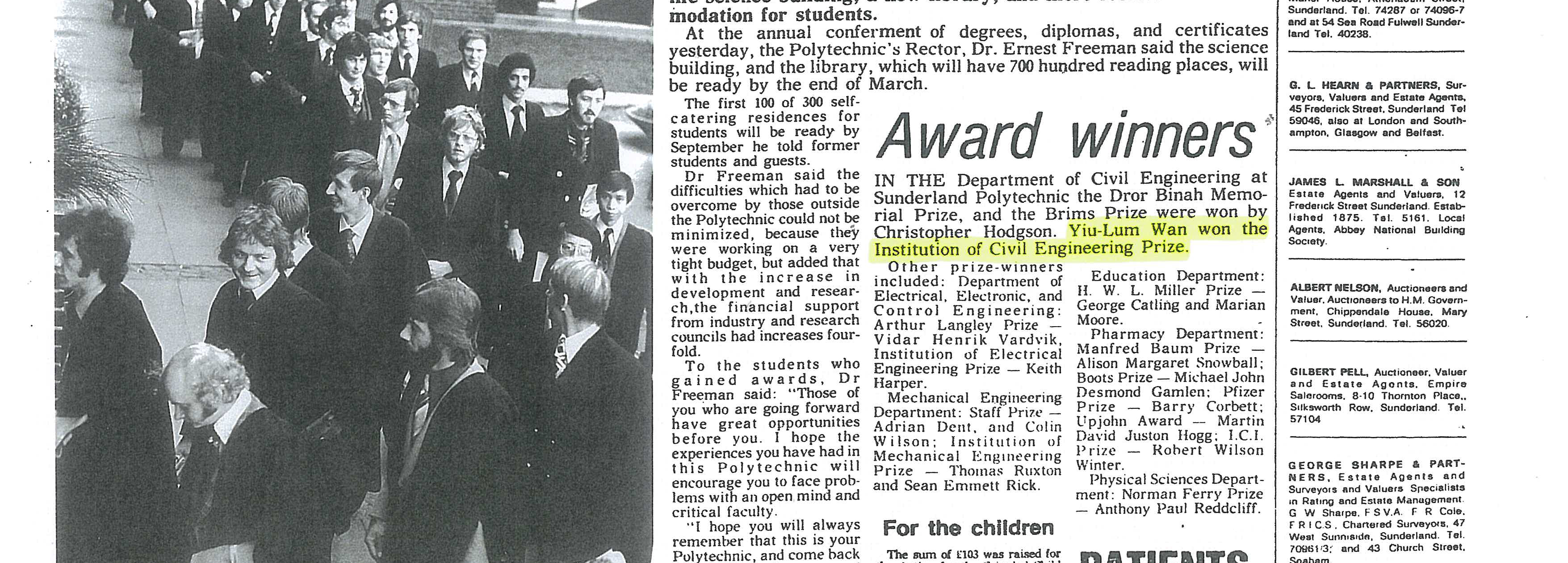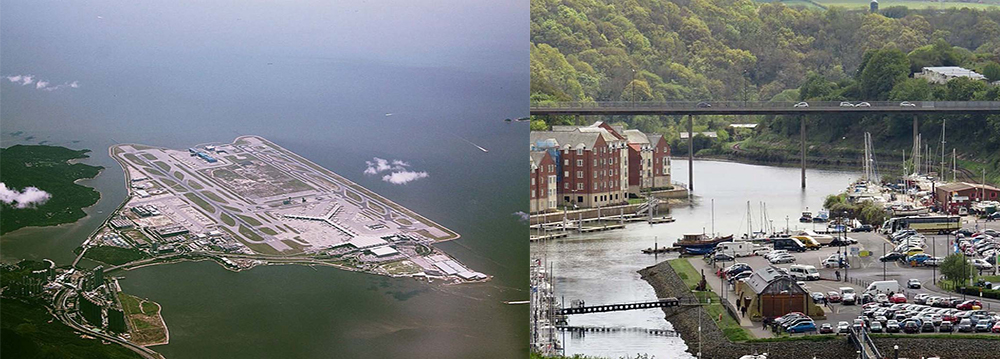After graduation Alan continued to work in the local area and as a Graduate Site Engineer participated in the construction of the northern section of the Tyne and Wear Metro within the City of Newcastle. Alan then went onto design the Redheugh Bridge river crossing in 1978.
Continuing his career in Civil Engineering designed the A171 Whitby Bridge crossing River Ask in North Yorkshire. Alan also designed a major highway bridge, across the Sungai Perak (Perak River) in the Perak State of West Malaysia. He was was responsible as the Design Manager of the Senior Management Airport Authority in Hong Kong, for the design management of all landside transport infrastructure on the airport island which was constructed from land reclamation in 1992, and opened on 6 July 1998.

Alan Yiu-Lun Wan Profile
What has been your biggest challenge during your career?
“The biggest challenge was to design the New Redheugh Bridge in Newcastle, using advanced technology at the time. The bridge used a prestressed concrete design with a balanced cantilever construction method, utilising a strengthened design to resist ship impact. When I started the design in August 1978, I was a Graduate Engineer with 20 months’ design experience. I had been admitted as a Corporate Member of The Institution of Civil Engineers two months earlier. Everything I studied on the Civil Engineering course at Sunderland Polytechnic gave me a good foundation to accomplish this challenge at the age of 28.”
Where did you enjoy working and where did you achieve your best work?
I had worked best in Mott, Hay and Anderson’s office at Pearl Assurance House in New Bridge Street, Newcastle upon Tyne from 1975 to 1983. The office had around 50+ people and we worked together as a family. I had indoor 5-a-side football at lunch times, ice cream on hot summer afternoons, quarterly pub-rallies after work with my colleagues, and unfailing support from my seniors. I was always assigned to major and challenging projects. Not to mention that I was allowed to work at home when I had flu. I returned to office by 5pm to hand in the work that I had done in the day and collected the work for the next day. Colleagues wished me well when I met them leaving the office after 5pm. It was in this office, the following projects were designed or managed:
- Tyne and Wear Metro, northern section of the running tunnels within the City of Newcastle
- Tyne and Wear Metro, Station Platform Steel Work Structures for Monument, Haymarket and Jesmond Stations.
- The new Redheugh Bridge Approach Roads at Gateshead Intersection.
- The new Redheugh Bridge crossing River Tyne, Newcastle (opened by the Princess of Wales on 18 May 1983)
- A171 Whitby Bridge, North Yorkshire
Why did you chose to study at Sunderland Polytechnic?
“Sunderland Polytechnic was introduced to me by my Supervisor who lived in Whitley Bay when I was working as a site Foreman for the Highways Office in Hong Kong. He said Sunderland Polytechnic was a good way for me to advance my study in Civil Engineering. I was attracted to Sunderland Polytechnic when I found out that the BSc(Hons) degree course in Civil Engineering was well recognised by professional institutions, more so than a number of other polytechnics and famous universities in the UK. Graduates from Sunderland Polytechnic with BSc(Hons) Civil Engineering were exempt from Part 1 and 2 examinations, and could apply directly after they attained the required industrial/professional experience, for the Part 3 examination of Corporate Membership to five professional disciplines in the UK, including The Institution of Civil Engineers, Institution of Structural Engineers, Institution of Municipal Engineers, and Royal Institution of Chartered Surveyors’ Quantity Surveying and Land Surveying Divisions. I believed that Sunderland Polytechnic offered a more robust and comprehensive training than most other polytechnics and universities, which was why I chose to study there.”

Left an image of Hong Kong Airport, right an image of the A171 Whitby Bridge, North Yorkshire
Who or what had the biggest influence on your time whilst studying at Sunderland Polytechnic?
“The Head of the Civil Engineering Department, Mr. Bettess, together with Dr. Boldy (a Lecturer in Hydraulics, and final year project supervisor), Mr. Staincliffe (personal tutor), and Mr. Tom McGinley (Structural Engineering) were the lecturers and professionals who influenced me most. I have a lot of memories in the Benedict Building as it was my home whilst studying at Sunderland Polytechnic. One of the very unforgettable memories is that the 1972 – 1976 BSc (Hons) Civil Engineering students were a very closely group of students (about 25 students altogether). We all played 5-aside football every Wednesday afternoon throughout the four years. When graduating, we had 4 graduates awarded First Class Honours, the class average was at Second Class Honours, Upper level. We all congratulated each other at Benedict Building before we attended the degree ceremony at Wearmouth Building.”
What is the best piece of advice you have received and what inspires you to continue working in Engineering?
The best advice I ever received is “Do your best wherever you are, and keep up your good name!” from my secondary school days in Hong Kong.
My biggest influences are related to the training of the next generation of engineers through the implementation of projects, and participation in professional institutions as leaders, and corporate membership training and examination. Being a Civil Engineer, I am inspired by the objective of The Institution of Civil Engineers which as stated in the Membership Certificate, being: “A society established for the general advancement of mechanical science and more particularly for promoting the acquisition of that species of knowledge which constitutes the profession of a Civil Engineer, being the art of directing the great resources of power in nature for the use and convenience of man.”
What do you want your legacy to be? How do you want to be remembered?
“I wish that the bridges I designed in England will be my legacy, I would also like to add “who is a graduate of Sunderland Polytechnic” to the video of the “Redheugh Bridge” so that in the documentation of the “The present crossing”, the last sentence should read “It was constructed by Edmund Nuttall Ltd to a design by Mott, Hay and Anderson's young engineer, Alan Yiu Lun Wan who is a graduate of Sunderland Polytechnic.”
What are your future plans and what advice would you give to recent graduates?
I shall be retired in a few years’ time, and wish to transfer my experience to younger engineers through industrial training and project implementation.
My advice would be: As a recent graduate, there are a lot of things you do not know. But you have to accept whatever responsibility you are given and ask your supervisor for assistance and guidance when you have problems. As a recent graduate, you should not be selective with jobs. As times go by, you will become experienced with a dedicated attitude towards work, you will soon be promoted to more senior role in your career.